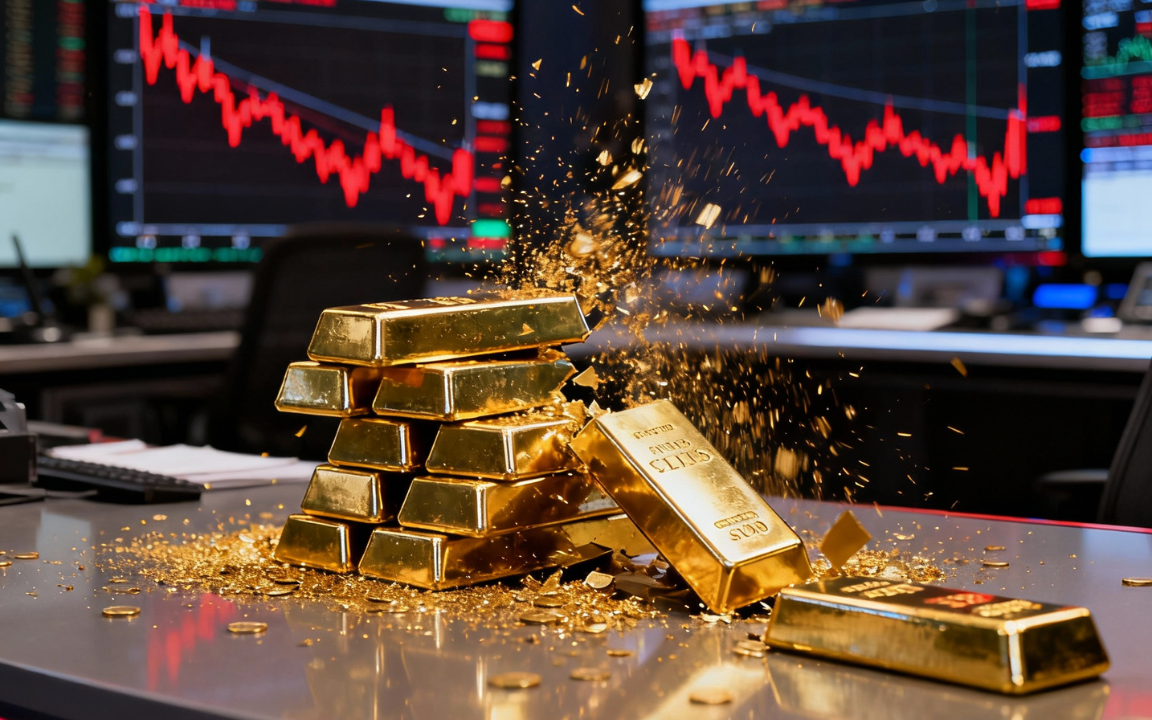Gold markets were rocked on Tuesday, recording their steepest single-day slide in more than five years.
The precious metal tumbled as much as 6.2% to around $4,100 per ounce, retreating sharply from an all-time high of $4,382 set just one day earlier.
This dramatic reversal marks the largest one-day drop for gold since 2020 and comes after an extraordinary rally throughout 2025.
For investors who watched gold soar by over 60% year-to-date, the correction served as a wake-up call to the fragility in commodity markets and the influence of global economic sentiment.
Gold prices plunge: Key drivers
The sudden drop in gold prices wasn’t caused by one big headline; it was more like a perfect storm of different factors hitting all at once after such a massive rally.
For starters, the US dollar jumped sharply, which usually makes gold less attractive to overseas buyers.
That alone was enough to trigger a wave of profit-taking after the big run-up. The dollar index climbed about 0.4%, and that move helped accelerate the sell-off.
On top of that, sentiment around risk started to improve. There was fresh optimism around US–China trade talks, especially with the announcement of an upcoming meeting between Trump and Xi Jinping.
With tensions easing and safe-haven demand fading, many investors who had piled into gold earlier were suddenly more comfortable rotating out.
Another piece of the puzzle came from India. The country is one of the biggest gold consumers in the world, and the major buying season there, driven by festivals and weddings, has just wrapped up.
With that demand fading, there was less physical buying to support prices.
All of these pieces stacked together and caused what analysts are calling a “blow-off top.”
Gold had climbed roughly 75% above its 200-week moving average, a level that historically tends to precede sharp pullbacks, and technical traders took note.
Yes, long-term investors might see the correction as a buying opportunity, but in the short term, the pain was obvious: gold ETFs, mining stocks, and related assets all dropped as volatility spiked.
Analyst verdict: Market correction or the start of a trend shift?
Market experts are divided on what comes next for gold after the abrupt slide.
Some see the correction as a healthy pause in an otherwise bullish market, driven by traders locking in profits and recalibrating positions rather than a sign of deeper weakness.
Others caution that technical patterns suggest near-term volatility could persist, with historical parallels drawn from previous market cycles.
Analysts predict spot gold could consolidate or even fall further, possibly to $3,500 per ounce, before resuming its uptrend if central banks maintain a dovish stance and inflation fears resurface.
The consensus is that while gold may be in a consolidation phase, its fundamental drivers, central bank buying, inflation hedging, and currency risks, remain intact.
Any resurgence in geopolitical or economic uncertainty could quickly revive demand for the metal.
The post Gold prices plunge 6%, marking biggest one-day drop in five years as rally stalls appeared first on Invezz

